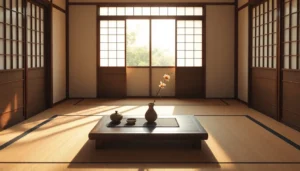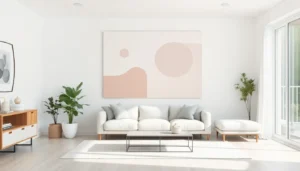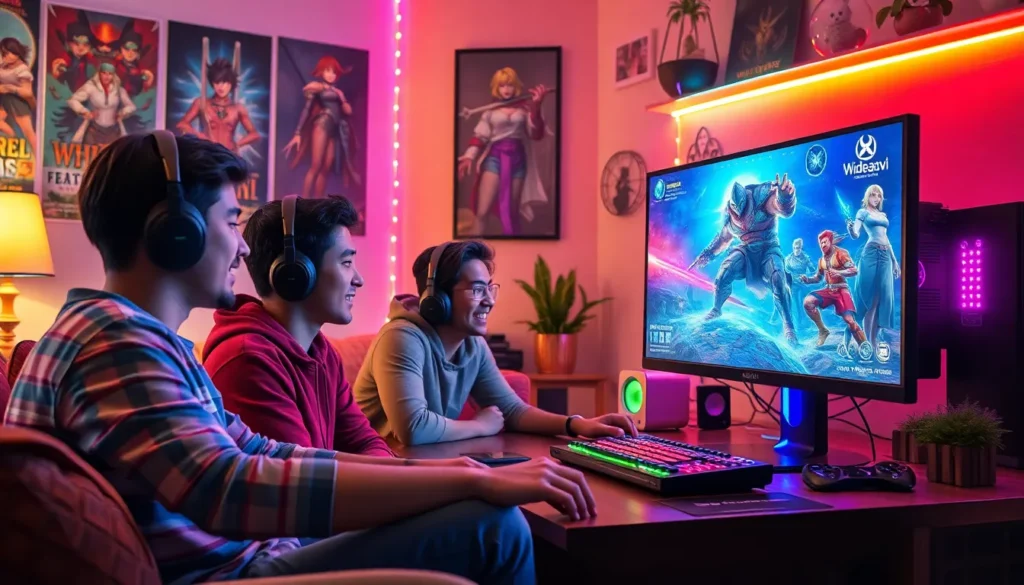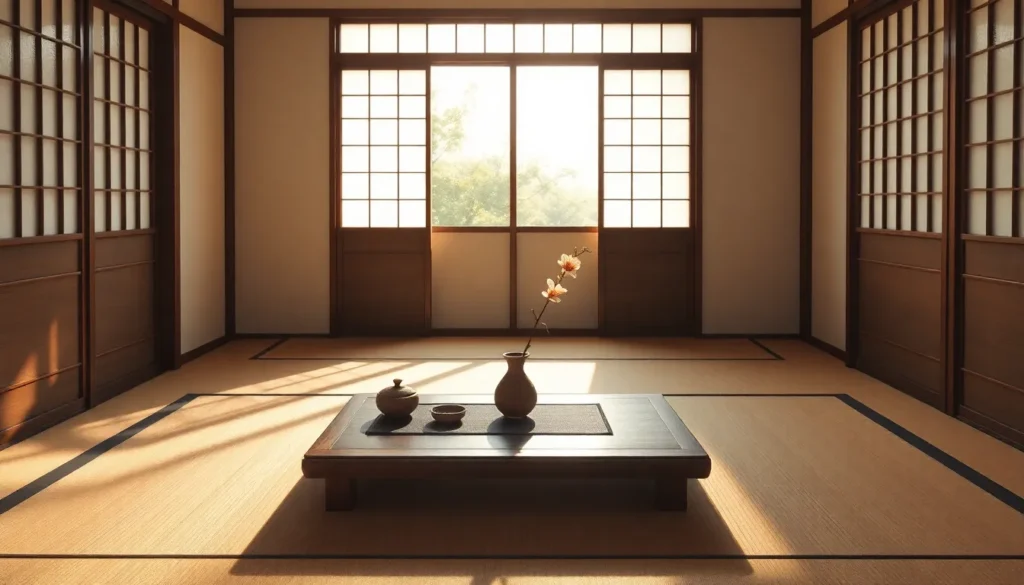Table of Contents
ToggleIn a world overflowing with clutter, minimalist interior design offers a breath of fresh air. Imagine stepping into a space that feels like a serene oasis, where every item serves a purpose and every corner invites calm. It’s not just about having fewer things; it’s about embracing simplicity and letting your home breathe.
Overview of Minimalist Interior
Minimalist interior design emphasizes simplicity and functionality. It prioritizes essential elements, stripping away excess to foster a sense of tranquility. Open spaces enhance the flow of natural light, creating an inviting atmosphere.
Neutral color palettes dominate minimalist design, with whites, grays, and earth tones prevailing. These colors contribute to a calm and cohesive environment. Furnishings often feature clean lines and geometric shapes. This approach prevents visual chaos while highlighting form and function.
Textural variety enriches minimalist spaces without overwhelming them. A mix of materials like wood, metal, and fabric adds depth while maintaining a streamlined look. Accessories are minimal, focusing on quality and intentional placement. They serve as focal points rather than distractions.
Sustainable practices increasingly influence minimalist designs. Eco-friendly materials and energy-efficient solutions align with the minimalist ethos of reducing excess and embracing simplicity. Incorporating plants enhances air quality and adds a touch of nature, reinforcing the serene ambiance.
Functionality remains at the forefront of minimalist spaces. Multi-purpose furniture—such as sofa beds or storage ottomans—maximizes usability while conserving space. Organized storage options maintain a clean and clutter-free environment, essential for reflecting a minimalist lifestyle.
The appeal of minimalist interiors lies in their capacity to create serene sanctuaries. Each element serves a purpose, contributing to overall harmony. By prioritizing simplicity and thoughtful design, minimalist interiors offer a refreshing contrast to the chaos of modern life.
Key Principles of Minimalist Interior
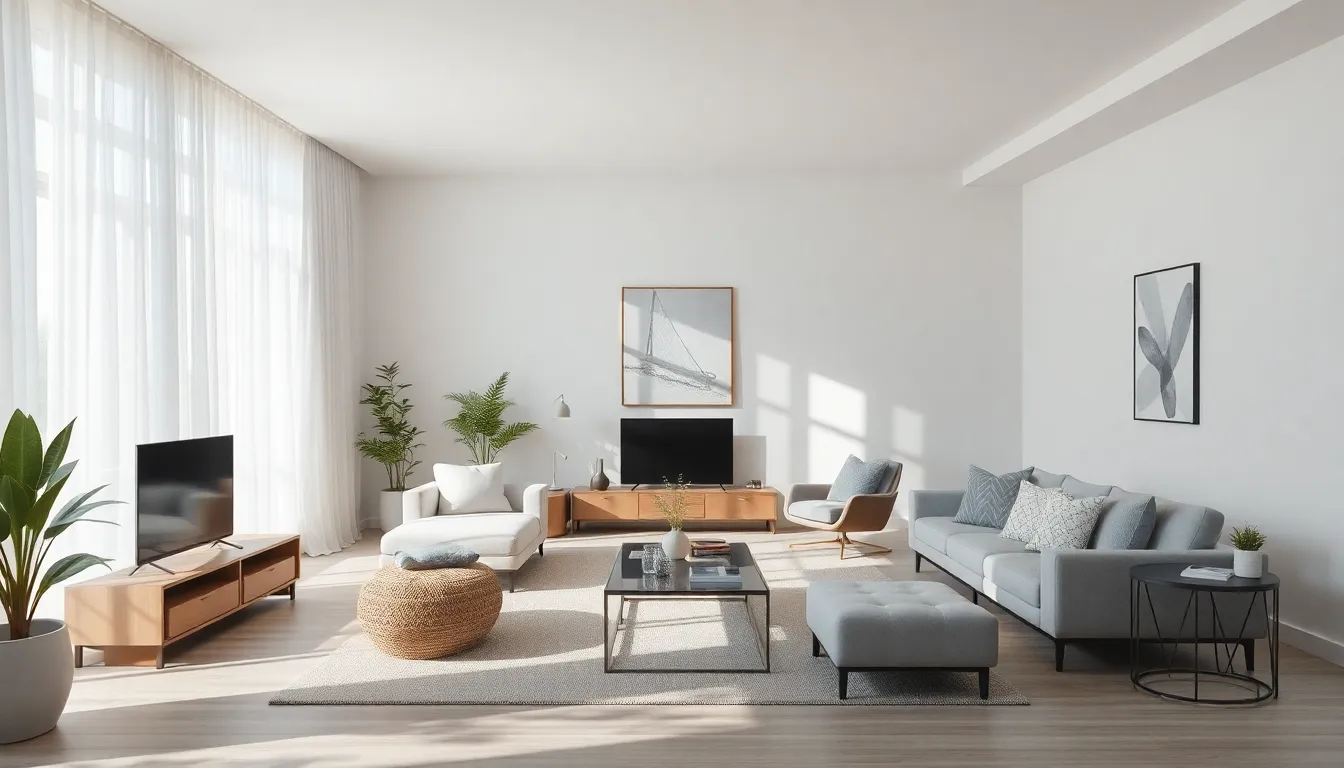
Minimalist interior design relies on core principles that emphasize simplicity and intentionality throughout spaces. Each principle fosters a serene atmosphere, promoting harmony and tranquility.
Simplicity and Functionality
Simplicity forms the foundation of minimalist interiors. Clutter-free surfaces create a calm environment, allowing essential elements to take center stage. Functionality plays a crucial role; every piece of furniture and decor has a designated purpose, minimizing distractions. Multi-functional furniture allows users to maximize space while remaining practical. Capsules reflect functionality, showcasing clean lines and unembellished forms. Prioritization of utility ensures that minimalism does not sacrifice livability, creating spaces that feel both serene and usable.
Neutral Color Palette
Neutral color palettes dominate minimalist aesthetics. Whites, grays, and earth tones contribute to an expansive sense of space within interiors. Subtle tones create a cohesive look that amplifies natural light, enhancing the overall brightness of a room. Texture plays a vital role in this palette, providing visual interest without overwhelming simplicity. Incorporating layers of neutral shades fosters depth and warmth while maintaining a minimalist appeal. Ultimately, this strategic use of color cultivates a peaceful, inviting atmosphere, critical for the minimalist design ethos.
Benefits of a Minimalist Interior
Minimalist interiors provide a range of benefits that enhance overall living experiences. These spaces promote a sense of serenity and balance, attracting those seeking simplicity and order.
Enhanced Space and Clarity
Minimalist design maximizes available space, creating an airy environment. Open arrangements foster movement and allow light to flow freely. Clean surfaces eliminate clutter, making it easy to locate items and stay organized. Quality over quantity stands out, with fewer, well-chosen items taking precedence. Neutral colors amplify this effect, promoting visual clarity and focus. Furthermore, strategic furniture placement enhances the perception of openness, inviting relaxation and calm.
Reduced Stress and Distraction
Minimalism creates a tranquil atmosphere that minimizes stress. A clutter-free environment leads to less visual chaos, allowing the mind to focus on what truly matters. Intentional design choices prioritize essential elements, removing distractions from everyday life. Access to natural light helps uplift mood and improve wellbeing. Overall, minimalist interiors serve as peaceful retreats, reducing anxiety and fostering mindfulness. Establishing harmony through simplicity facilitates deeper connections with spaces, enhancing personal satisfaction and contentment.
Common Elements in Minimalist Design
Minimalist design centers on simplicity and purposeful selection of elements. It combines functionality with aesthetic appeal.
Furniture Selection
Furniture in minimalist spaces focuses on essential pieces that serve a clear function. Each item possesses clean lines and geometric shapes, enhancing the visual order in a room. Multi-functional furniture maximizes usability, allowing a piece to fulfill multiple roles, like a sofa that converts into a bed. Quality materials replace excessive ornamentation, emphasizing craftsmanship over quantity. Minimal furniture arrangements foster open spaces, creating an airy environment that promotes tranquility. Each selection should reflect intentionality, contributing positively to the overall design while maintaining an uncluttered atmosphere.
Lighting Choices
Lighting plays a vital role in minimalist design, influencing mood and perception of space. Natural light takes precedence, with large windows and unobstructed views enhancing brightness. Choosing fixtures that provide soft, diffused illumination complements this aesthetic by reducing harsh shadows. Statement light fixtures may serve as focal points, but they maintain simplicity in design. Adjustable lighting options add versatility for different needs without overwhelming the space. Layered lighting creates depth while highlighting textural contrasts, ensuring comfort without compromising the minimalist ethos.
Challenges of Adopting Minimalism
Adopting minimalism can pose various challenges for individuals and families. Emotional attachment to belongings often complicates the decluttering process, as people struggle to part with items tied to memories or experiences. Overcoming consumer habits also proves difficult, especially in a society that encourages accumulation. Establishing a minimalist lifestyle requires reflecting on personal values and priorities.
Lifestyle adjustments can face resistance, particularly when organizing and maintaining a clutter-free environment. Time investments play a significant role, as individuals may find the initial sorting and decluttering efforts demanding. Compromising on aesthetics may be necessary since acquiring fewer items can lead to a more simplistic and less personalized space.
Social pressures also impact the move toward minimalism. Friends and family might not understand these lifestyle choices, causing feelings of isolation or judgment. Understanding and communicating objectives can ease these social tensions.
Creating a minimalist interior further requires navigating space constraints. Small or awkwardly shaped rooms present unique challenges in optimizing functionality while adhering to minimalist principles. Identifying the most suitable multi-functional furniture can take time and careful consideration.
Lastly, maintaining a minimalist space can feel daunting. New items can quickly accumulate, making it essential to develop consistent habits that reinforce simplicity. Regularly evaluating possessions and ensuring each item serves a defined purpose helps combat the tendency to revert to clutter.
Embracing a minimalist interior design not only transforms living spaces but also enhances overall wellbeing. By prioritizing simplicity and functionality, individuals can create serene environments that foster tranquility and clarity. The intentional arrangement of essential items allows for a more organized and inviting atmosphere, while the use of neutral palettes and quality materials contributes to visual harmony.
As the world becomes increasingly chaotic, minimalist interiors offer a refreshing retreat, promoting balance and focus. Adopting this design philosophy encourages sustainable practices and mindful living, making each space a true reflection of personal values. Ultimately, minimalist design is about more than aesthetics; it’s a lifestyle choice that cultivates peace and satisfaction in everyday life.




